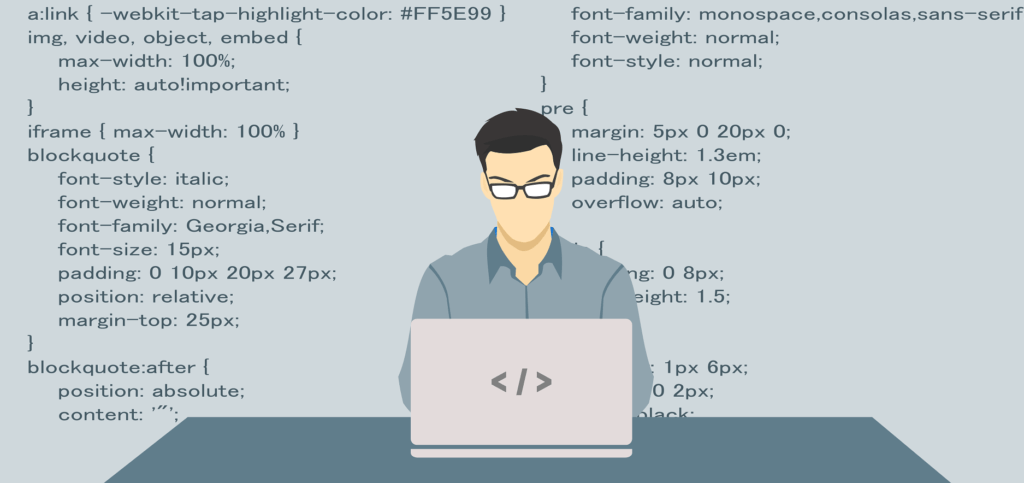Introduction:
What do you think? if AI could completely take over low code no code development? As these platforms have become increasingly popular among non-expert programmers, the integration of generative AI might just be the game-changer. According to industry experts, this addition could supercharge these systems, potentially leading to a new era of development tools.
While developers have already begun exploring AI’s role in software development, the early results suggest that AI, like ChatGPT, can offer valuable assistance, particularly in tasks like code review. However, when it comes to coding complex applications, human developers are likely to remain indispensable. Nonetheless, the introduction of generative AI holds immense promise for low-code and no-code environments, with analysts predicting a significant impact.
“Generative AI is poised to transform low-code and no-code platforms, making it easier for even citizen developers to access powerful functionality based on simple requests,” explains Dion Hinchcliffe, principal analyst at Constellation Research.
Curious to learn more about how AI could reshape the landscape of low-code and no-code development? Dive into our exploration to gain valuable insights into this evolving technology.
Why Low-Code/No-Code Is on the Rise?
Let’s talk about why low-code and no-code development is skyrocketing in popularity. In today’s fast-paced business landscape, companies are facing a slew of challenges: from staffing shortages to mounting workloads and ever-increasing demands for digital solutions. But here’s the kicker: traditional methods of hiring mobile app developers or outsourcing projects are either too pricey or time-consuming.
Enter low-code and no-code platforms to save the day. These nifty tools empower businesses to digitize their processes and cater to both employees and customers, all while sidestepping the need for a team of coding whizzes. Picture this: instead of waiting around for a developer to whip up an app, anyone from the IT team to the marketing department can roll up their sleeves and create one themselves.
So, why the sudden surge in popularity? Well, for starters, low-code and no-code development offer a slew of perks:
1. Accelerated Application Development: These platforms turbocharge the app-building process, slashing development time and getting products to market faster than ever.
2. Increased Agility: In today’s fast-moving market, agility is key. Low-code and no-code tools allow businesses to pivot on a dime, responding swiftly to changing customer demands and market trends.
3. Cost-Effectiveness: By reducing the need for pricey coding expertise, these platforms can save businesses a bundle of development and maintenance costs.
4. Democratization of Application Development: Gone are the days of coding being an exclusive club. With low-code and no-code, anyone with an idea and a bit of creativity can bring it to life, fostering innovation and collaboration across the board.
Current State of Low-Code/No-Code Development

Let’s take a look at where low-code and no-code development stands today. These tools have been around for a while, but the pandemic has lit a fire under their popularity. With businesses scrambling to adapt digitally, there’s been a surge in demand for platforms that can churn out apps faster than you can say “digital transformation.” And boy, do these platforms deliver!
According to Gartner, by 2024, over 65% of all applications will be created using low-code and no-code platforms. That’s a staggering statistic and a testament to just how game-changing these tools have become.
So, what’s the big deal? Well, for starters, they put app development within reach for just about anyone. You don’t need to be a coding whiz or have a degree in computer science to whip up a killer app. With user-friendly visual interfaces and drag-and-drop controls, building apps is as easy as pie.
But the real magic happens when you consider the time and money these platforms can save. McKinsey reports that using a low-code development platform can slash development time by up to 90%. That’s not just a little improvement—that’s a game-changer.
And it’s not just tech companies hopping on the low-code/no-code bandwagon. Industries across the board are reaping the benefits. From finance to healthcare, businesses are streamlining operations, improving efficiency, and delivering better services to customers—all thanks to low-code and no-code development.
Take the financial sector, for example. They’re using these platforms to create slick customer-facing apps and automate tedious internal processes like accounting and compliance reporting. Meanwhile, healthcare organizations are speeding up patient intake forms, developing telemedicine apps, and revolutionizing medical records management.
In short, low-code and no-code development aren’t just buzzwords—they’re game-changers. And as businesses continue to embrace digital transformation, these platforms will only become more essential in shaping the future of app development.
What Is AI’s Potential Impact on Low-Code/No-Code?
Let’s explore how AI could shake up the world of low-code and no-code development. Picture this: AI algorithms churning out code faster and more accurately than humans ever could. It’s like having a coding wizard at your fingertips, optimizing the whole development process, and nixing those pesky human errors.
And it’s not just about cranking out lines of code. Thanks to advancements in natural language processing, soon you might be able to tell AI exactly what you want in plain English, no visual interfaces are needed. Talk about a game-changer!
But hold your horses—will AI put us all out of a job? Not so fast. While AI can handle the nitty-gritty of coding, it can’t replace that human touch when it comes to design. Crafting apps that are intuitive and user-friendly requires a human-centered approach, making sure they meet the needs and preferences of real people.
Plus, AI algorithms might struggle with industry-specific know-how. Sure, they can whip up some code, but do they understand the ins and outs of healthcare or finance? That’s where the flexibility of low-code and no-code platforms comes in handy, allowing humans to bring their expertise to the table.
But here’s the kicker: when you pair the power of AI with low-code/no-code development, the possibilities are endless. Imagine whipping up apps in a fraction of the time, with AI handling the heavy lifting and humans adding that special touch. It’s a match made in tech heaven. So, while AI might be shaking things up, there’s still plenty of room for humans in the world of low-code and no-code development.
Pairing AI and Low-Code/No-Code
Let’s talk about how AI and low-code/no-code development can team up to supercharge app development. While AI might not be taking over the show anytime soon, it’s clear that these two technologies have some serious synergy. Here’s how they’re joining forces to revolutionize the game:
1. AI-Assisted Development: Imagine having a coding buddy who’s always got your back. That’s what AI brings to the table in low-code/no-code platforms. From generating code to optimizing workflows and offering handy suggestions, AI is like having a digital co-pilot guiding you every step of the way. Take Microsoft’s Power Apps, for example. They’ve integrated AI Copilot, which suggests the best components for your app, making development a breeze.
2. Requirements Gathering and Documentation: Let’s face it—requirements gathering and documentation can be a real snooze-fest. But AI is here to shake things up. Picture this: a chatbot that chats with users, gathers all the necessary info, and documents it automatically. No more tedious paperwork or endless meetings. Just smooth sailing from start to finish.
3. Intelligent Automation: AI isn’t just good at crunching numbers—it’s a pro at automation too. With AI-powered chatbots integrated into low-code platforms, tasks like testing and debugging code become a piece of cake. These bots analyze code, identify errors, and even suggest solutions, saving developers time and effort.
4. Custom AI Component Integration: Want to add some AI magic to your app? With low-code platforms, it’s easier than ever. Developers can integrate custom AI components, like machine learning models or natural language processing algorithms, without breaking a sweat. Think Google’s AutoML or Microsoft’s Custom Vision—these tools make custom AI development a breeze.
Conclusion: Low Code No Code Development
In conclusion, the pairing of AI with low-code and no-code development presents a powerful synergy that promises to transform the landscape of app development. By leveraging AI-assisted development, organizations can streamline their processes, accelerate application development, and improve overall efficiency. Additionally, the integration of AI into requirements gathering and documentation streamlines workflows, saving valuable time and resources.
Intelligent automation facilitated by AI-powered chatbots enhances productivity by automating tasks like testing and debugging. Moreover, the ability to integrate custom AI components into low-code platforms enables organizations to harness the power of AI tailored to their specific needs.
While AI offers significant benefits in terms of efficiency and automation, it’s important to recognize that human expertise and creativity remain essential, particularly in areas such as design and domain-specific knowledge. As businesses continue to explore the potential of AI in conjunction with low-code and no-code development, they stand to unlock new possibilities for innovation and growth in the digital era.

